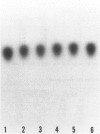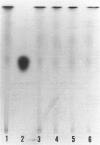Abstract
Soil samples were collected from 28 fields which had received manure from Michigan's most highly contaminated dairy herds. The number of fields in each concentration range of PBB in soil were: 2, not detectable; 15, 0.0 to 8.0 ppb; 6, 14-102 ppb, and 5, 153 to 371 ppb. Plant tissue sampled from the 10 most highly contaminated fields contained no detectable PBB. No evidence of significant degradation of PBB was noted after 1 year incubation in soil. When 14C hexabromobiphenyl and heptabromobiphenyl isomers were incubated in soil less than 0.2% of the 14C was volatilized. Also gas chromatographic analysis of soil extracts showed no difference in recovery of the six major PBB isomers between sterilized and nonsterilized soil. Analysis of these extracts by thin layer chromatography and autoradiography showed no 14C-PBB intermediates. Photodegradation products of the major hexa- and heptabromobiphenyl isomers showed more but still minor (approximately 3%) biodegradation in soil. Much of the photodegradation products appeared bound to soil, since these products could not be extracted from soil. Photodegradation does not appear to be a significant fate of PBB in manures spread on fields since no change was noted in the relative concentrations of isomers in soil samples from our field survey. Studies with distilled, tap, river, and soil waters showed that PBB solubility was markedly influenced by water composition.
Full text
PDF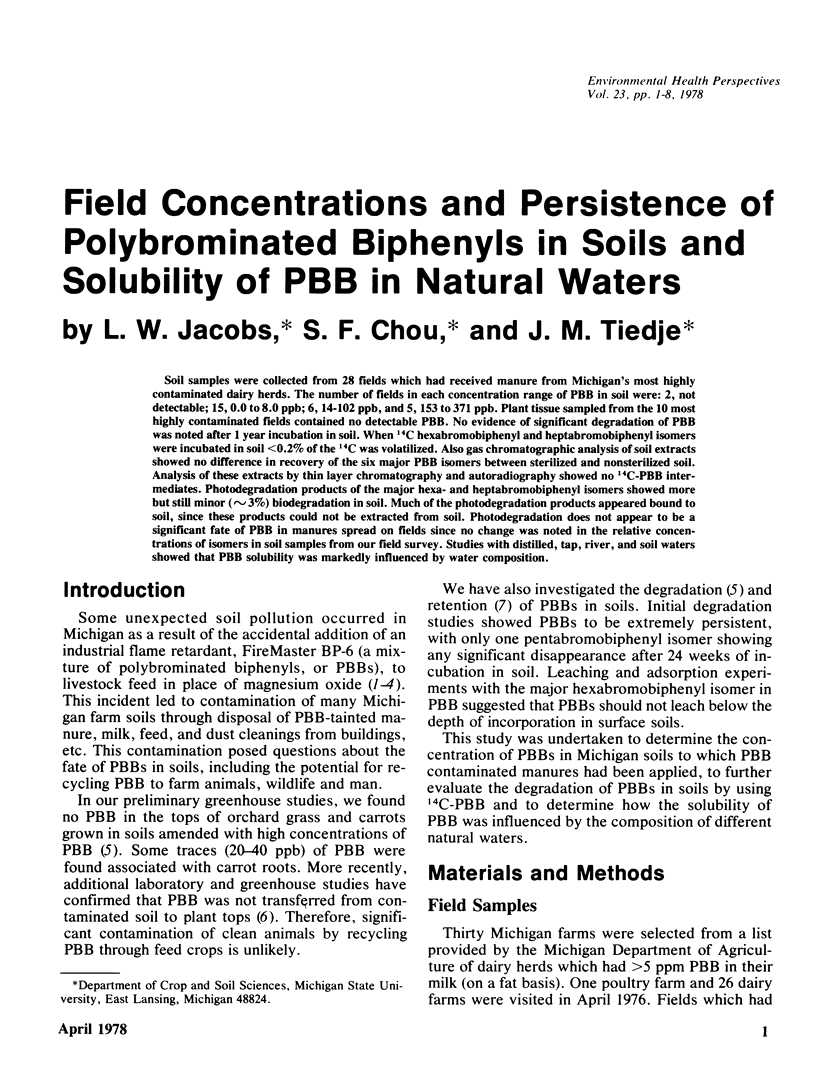
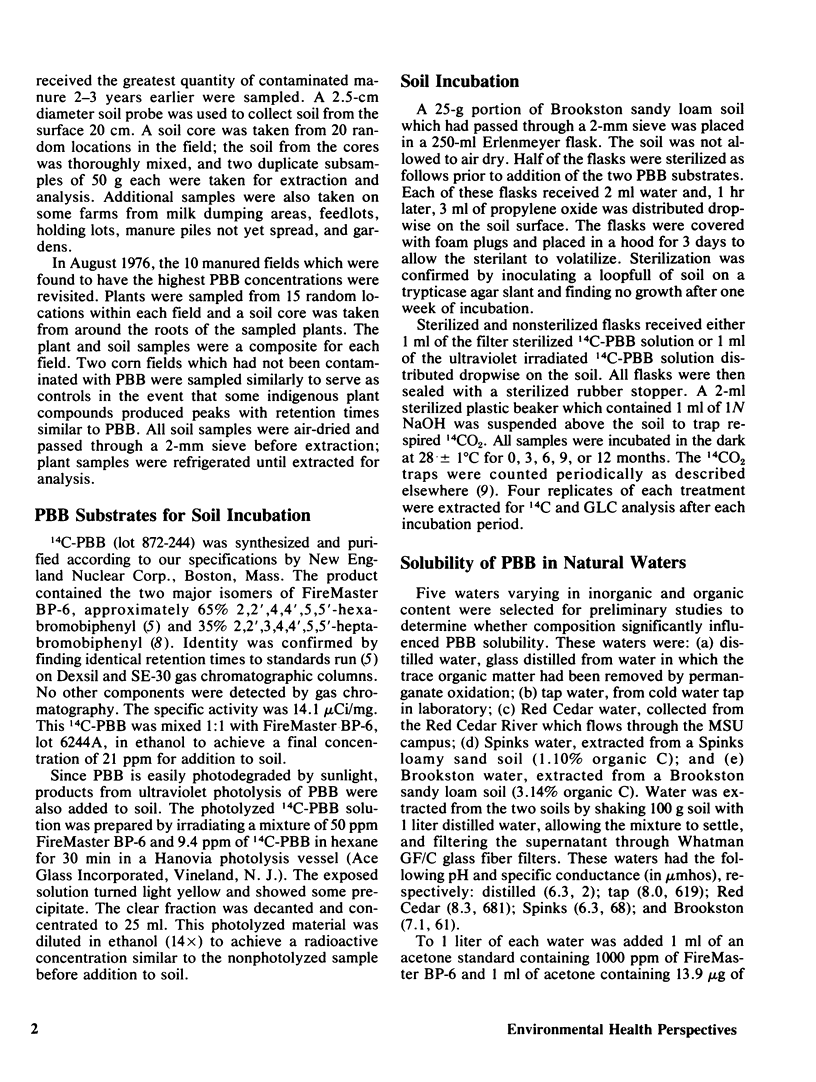
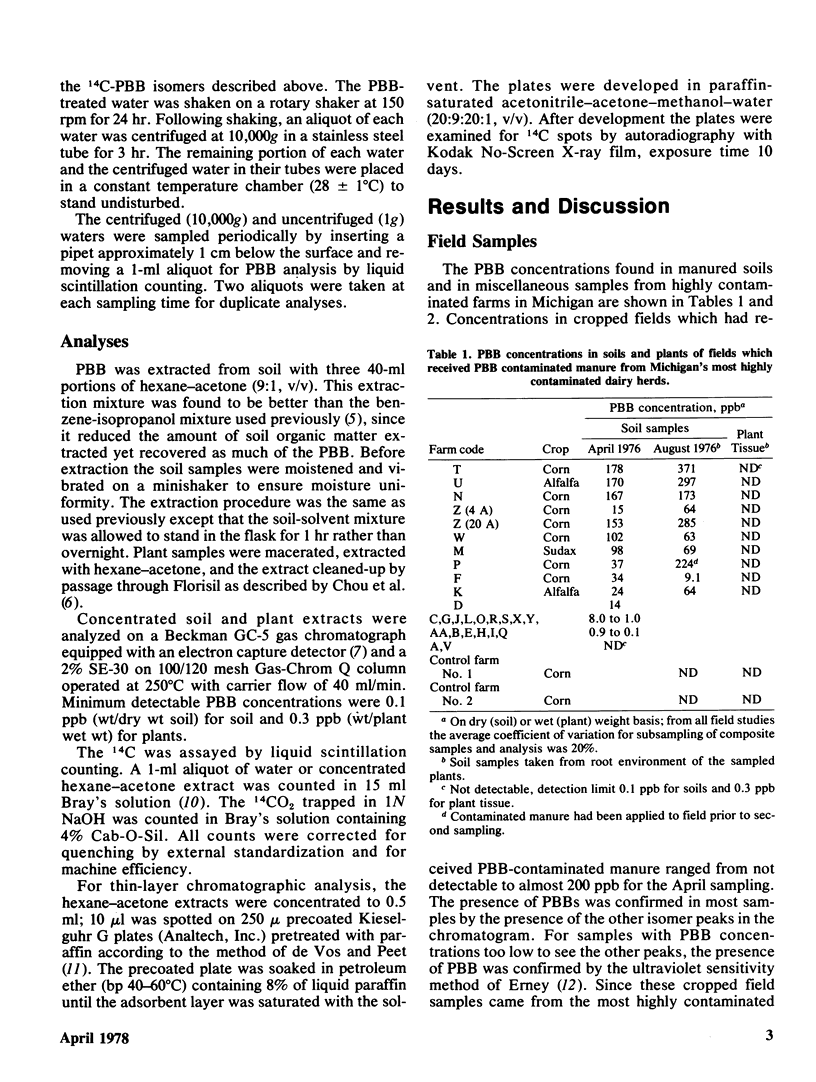
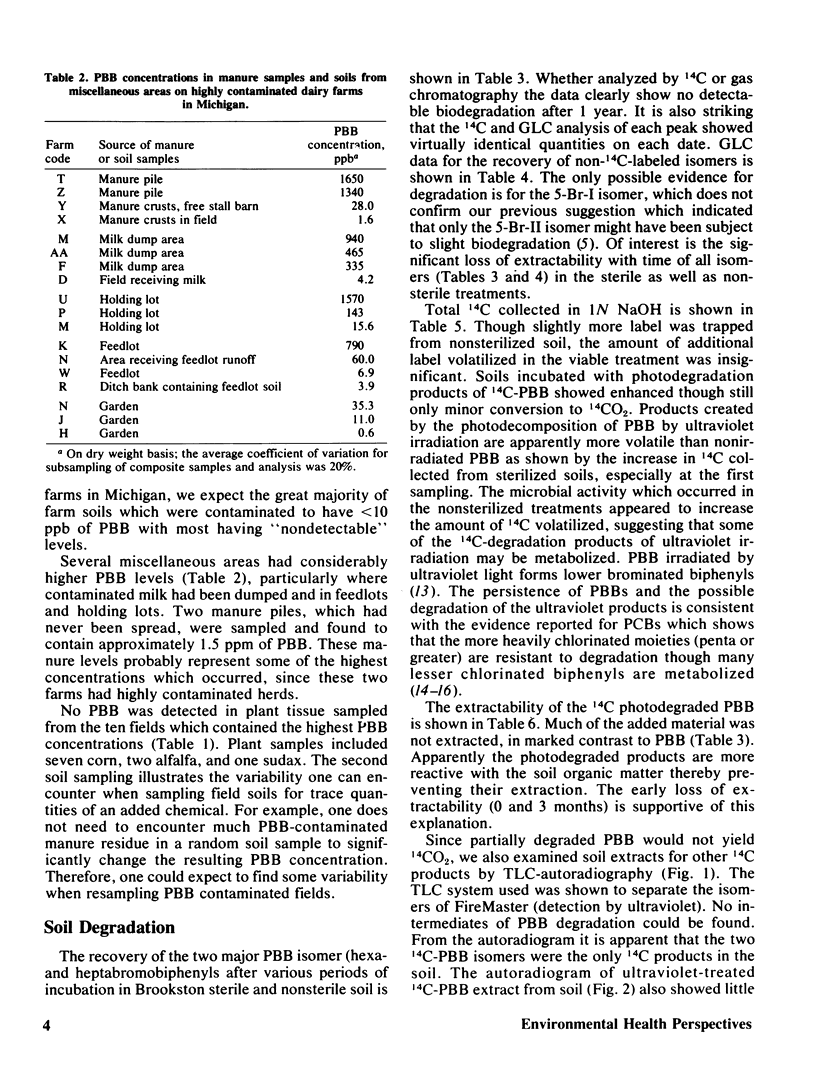
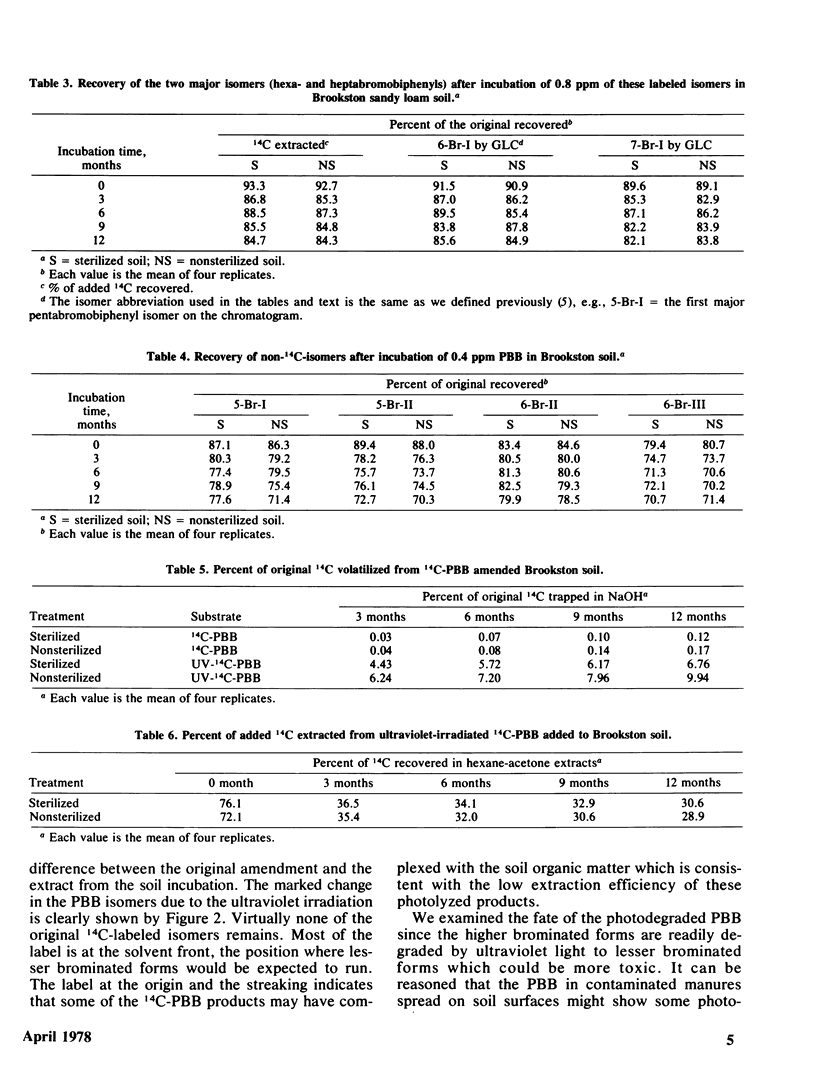
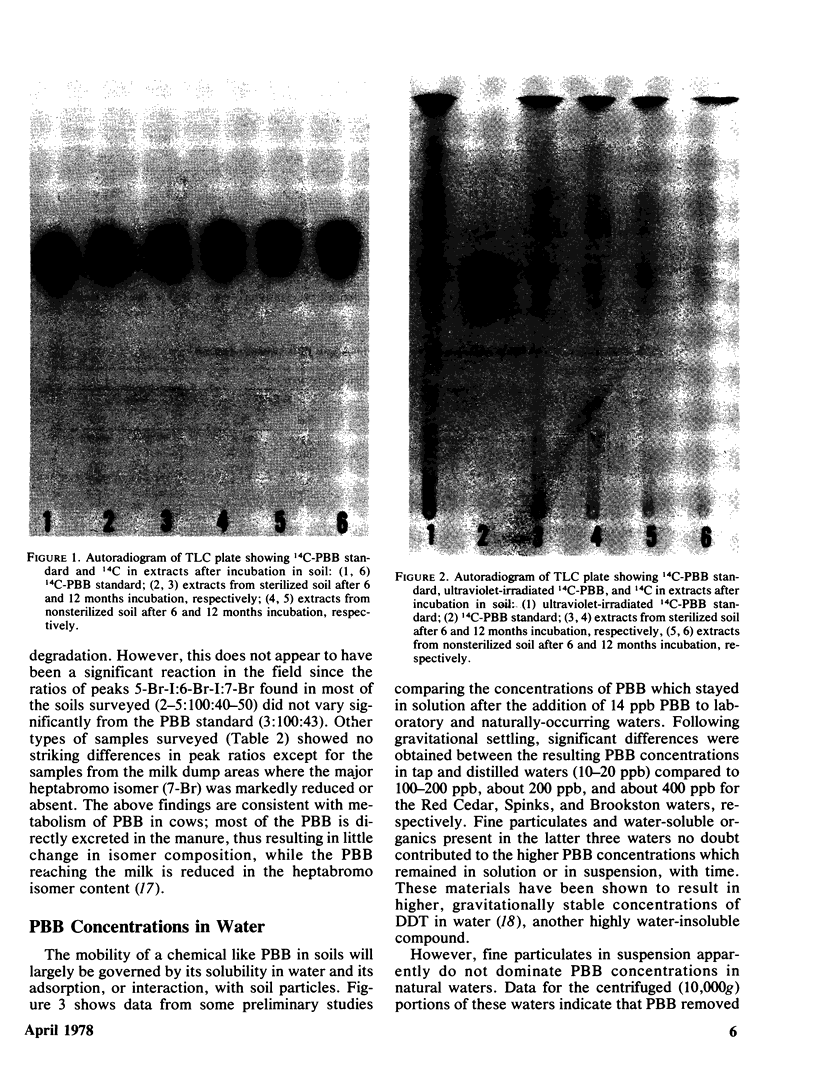
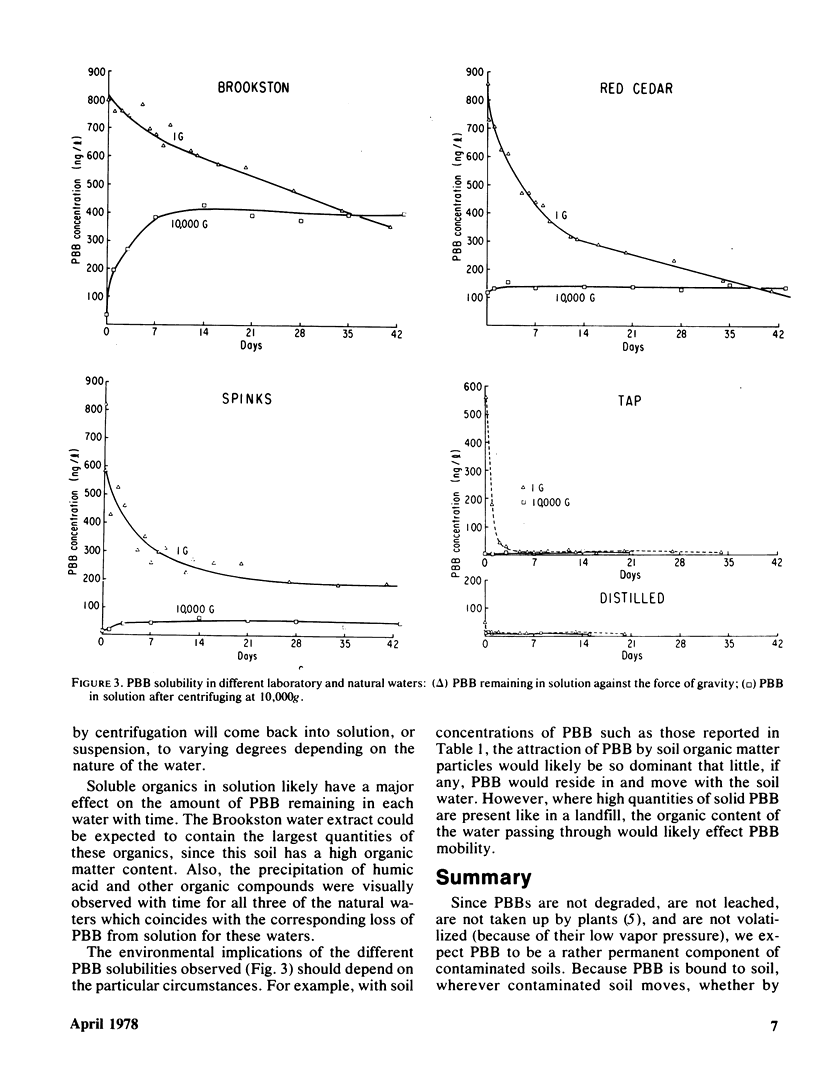

Images in this article
Selected References
These references are in PubMed. This may not be the complete list of references from this article.
- Baxter R. A., Gilbert P. E., Lidgett R. A., Mainprize J. H., Vodden H. A. The degradation of polychlorinated biphenyls by micro-organisms. Sci Total Environ. 1975 May;4(1):53–61. doi: 10.1016/0048-9697(75)90014-5. [DOI] [PubMed] [Google Scholar]
- Carter L. J. Michigan's PBB Incident: Chemical Mix-Up Leads to Disaster. Science. 1976 Apr 16;192(4236):240–243. doi: 10.1126/science.192.4236.240. [DOI] [PubMed] [Google Scholar]
- Erney D. R. Confirmation of polybrominated biphenyl residues in feeds and dairy products, using an ultraviolet irradiation-gas-liquid chromatographic technique. J Assoc Off Anal Chem. 1975 Nov;58(6):1202–1205. [PubMed] [Google Scholar]
- Filonow A. B., Jacobs L. W., Mortland M. M. Fate of polybrominated biphenyls (PBB's) in soils. Retention of hexabromobiphenyl in four Michigan soils. J Agric Food Chem. 1976 Nov-Dec;24(6):1201–1204. doi: 10.1021/jf60208a004. [DOI] [PubMed] [Google Scholar]
- Fries G. F., Marrow G. S. Excretion of polybrominated biphenyls into the milk of cows. J Dairy Sci. 1975 Jun;58(6):947–951. doi: 10.3168/jds.S0022-0302(75)84661-3. [DOI] [PubMed] [Google Scholar]
- Jacobs L. W., Chou S. F., Tiedje J. M. Fate of polybrominated biphenyls (PBB's) in soils. Persistence and plant uptake. J Agric Food Chem. 1976 Nov-Dec;24(6):1198–1201. doi: 10.1021/jf60208a005. [DOI] [PubMed] [Google Scholar]
- Robl M. G., Jenkins D. H., Wingender R. J., Gordon D. E. Toxicity and residue studies in dairy animals with firemaster FF-1 (polybrominated biphenyls). Environ Health Perspect. 1978 Apr;23:91–97. doi: 10.1289/ehp.782391. [DOI] [PMC free article] [PubMed] [Google Scholar]
- Ruzo O., Zabik M. J. Polyhalogenated biphenyls: photolysis of hexabromo and hexachlorobiphenyls in methanol solution. Bull Environ Contam Toxicol. 1975 Feb;13(2):181–187. doi: 10.1007/BF01721734. [DOI] [PubMed] [Google Scholar]
- Tucker E. S., Saeger V. W., Hicks O. Activated sludge primary biodegradation of polychlorinated biphenyls. Bull Environ Contam Toxicol. 1975 Dec;14(6):705–713. doi: 10.1007/BF01685246. [DOI] [PubMed] [Google Scholar]
- de Vos R. H., Peet E. W. Thin-layer chromatography of polychlorinated biphenyls. Bull Environ Contam Toxicol. 1971 Mar-Apr;6(2):164–170. doi: 10.1007/BF01540100. [DOI] [PubMed] [Google Scholar]



